Layer 1 blockchains serve as the foundational infrastructure for decentralized networks, handling all transaction processing, consensus, and data storage on-chain. These blockchains do not rely on secondary layers to validate transactions, ensuring a high degree of decentralization. Notable Layer 1 blockchains include Bitcoin, Ethereum, and Solana, each offering distinct approaches to scalability, security, and consensus.
What is Sui Network?
Sui is another Layer 1 blockchain developed by Mysten Labs, launched on May 3, 2023. It aims to offer faster transaction processing, low latency, and scalability, focusing primarily on decentralized finance (DeFi), gaming, and retail payments. Sui’s innovative architecture and consensus mechanism make it stand out among other Layer 1 solutions, with the potential to enhance the efficiency of decentralized applications (dApps). Its native token, SUI, plays a critical role in maintaining network operations, governance, and overall ecosystem dynamics.
History of Sui Network
Sui Network was developed by Mysten Labs, a company formed by former Meta (formerly Facebook) employees who worked on the Diem blockchain. Leveraging their expertise, the team built Sui with a focus on overcoming the scalability and transaction latency challenges that have plagued other Layer 1 blockchains like Ethereum and Solana.
The mainnet launch on May 3, 2023, marked Sui’s official entry into the blockchain space, supported by a public sale of its native SUI token. The token sale took place on exchanges such as Bybit and KuCoin, though U.S. residents were restricted from participation due to regulatory limitations. Within its first few months, Sui garnered considerable attention, boasting over one million active addresses by August 2023 and nearly nine million by September 2023.
Use Cases of Sui Network
Sui Network is built with a versatile architecture designed to accommodate various use cases across different sectors. Some of its primary use cases include:
Decentralized Finance (DeFi): Sui enables the creation of DeFi applications, such as decentralized exchanges (DEXs), lending platforms, and yield farming protocols. Its high throughput and consistent gas fees make it attractive for DeFi projects.
Gaming: The blockchain’s parallel transaction processing capabilities make it suitable for blockchain-based gaming, where high-speed transactions and low latency are crucial for an optimal user experience.
Retail Payments: Sui’s scalability and quick transaction finality make it ideal for retail payments, supporting point-of-sale systems and peer-to-peer transfers.
Smart Contract Development: By using the Move programming language, Sui facilitates the deployment of complex smart contracts, simplifying the development process for dApp creators.
How Sui Network Works
Sui’s architecture and consensus mechanism form the backbone of its high-performance capabilities:
Layer 1 Blockchain: Sui functions as a foundational blockchain, handling transaction validation and smart contract execution. Unlike Layer 2 solutions, which rely on Layer 1 chains for transaction verification, Sui operates independently, ensuring decentralization.
Move Programming Language: Derived from the Rust programming language, Move is designed for secure and efficient smart contract development. It provides developers with tools to build robust dApps, contributing to Sui’s growth in both DeFi and gaming sectors.
Delegated Proof of Stake (DPoS): Sui utilizes a DPoS consensus mechanism, where token holders delegate their SUI tokens to validators responsible for transaction verification. This model ensures faster transaction processing by leveraging a smaller group of validators, leading to quicker consensus.
Parallel Transaction Processing: One of Sui’s key innovations is its ability to process transactions in parallel, rather than sequentially. This parallelization significantly enhances throughput, reducing latency and making it possible to handle high transaction volumes efficiently.
Why is SUI on The News
Despite the promising features of the Sui network, recent developments have cast a shadow over the project’s reputation. Allegations surfaced in late 2023 accusing insiders of selling $400 million worth of SUI tokens during a price surge, raising concerns within the cryptocurrency community.
This insider selling reportedly occurred during a period of significant price appreciation for the SUI token, which had quintupled from its previous lows. Critics argue that this insider activity undermines confidence in the long-term value of the token and calls into question the motivations of those behind the project.
The Sui Foundation responded to these allegations, attempting to clarify the situation. However, many in the crypto space remain skeptical, fearing that insider selling could harm the token’s value and the broader ecosystem. The timing of the sales, particularly as the token’s price surged, fueled speculation that insiders were capitalizing on momentum-driven retail buyers. Such concerns have raised doubts about whether SUI can maintain its upward trajectory or if the project will face significant hurdles moving forward.
Advantages of Sui Network
Scalability: The parallel transaction processing capability allows Sui to achieve high throughput, making it scalable for various applications, including DeFi and gaming.
Low Latency: Instant transaction finality and consistent gas fees contribute to lower latency, improving the overall user experience for dApps built on the network.
Developer-Friendly: The use of the Move programming language simplifies smart contract creation, encouraging developer participation and expanding the ecosystem.
Decentralized Governance: SUI token holders have voting rights on network upgrades, fostering a community-driven governance model that ensures decentralization.
Sui Network Responds to Allegations Over ‘Token Sale’Disadvantages of Sui Network
Limited Token Availability: With only 14% of the total supply released at launch, SUI’s liquidity could be constrained, potentially impacting its market dynamics and token price stability.
Regulatory Challenges: The exclusion of U.S. residents from the initial token sale highlights regulatory barriers that Sui must navigate to achieve wider adoption.
Early Stage Risks: As a relatively new blockchain, Sui faces the typical risks of early-stage projects, including the potential for security vulnerabilities, market volatility, and competition from established Layer 1 blockchains.
Conclusion
Sui Network has made a significant impact since its mainnet launch in May 2023. With its innovative Layer 1 architecture, parallel transaction processing, and developer-friendly Move programming language, it has positioned itself as a strong contender in the DeFi, gaming, and retail payments sectors. The SUI token’s utility extends across consensus, governance, and transaction fees, playing a vital role in maintaining the network’s operations.
However, controversies like insider selling and regulatory challenges raise questions about Sui’s long-term sustainability. If the network can address these issues while maintaining its focus on scalability and performance, it has the potential to establish itself as a leading blockchain in the years to come.






